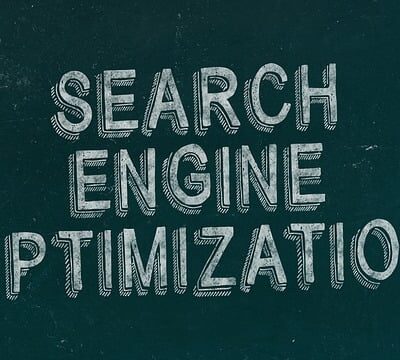In the competitive digital landscape, every business is looking to maximize its online presence while justifying every marketing dollar spent. For brands based in Brisbane, investing in SEO has become a vital part of digital strategy. But how do you determine whether your investment is paying off? Measuring the return on investment (ROI) of SEO services may not be as straightforward as traditional paid campaigns, but with the right tools and metrics, it is very much achievable.
Whether you’re a local retailer, service provider, or growing e-commerce store, understanding SEO ROI is essential for sustainable success. It helps in identifying what’s working, optimizing resources, and making data-driven decisions that improve visibility and profitability over time.
Understanding SEO ROI: What It Means
Return on Investment (ROI) in SEO refers to the revenue or value a business gains from its SEO efforts compared to the costs of those efforts. Unlike paid ads where results are immediate, SEO is a long-term game. The value builds up over time, making it even more important to track performance correctly.
SEO ROI is typically calculated as:
(Revenue from SEO – Cost of SEO) / Cost of SEO x 100
For example, if your Brisbane brand spends $5,000 on SEO and generates $20,000 in organic revenue directly attributed to search, the ROI would be:
($20,000 – $5,000) / $5,000 x 100 = 300%
A positive ROI indicates that your SEO is generating more revenue than it’s costing.
Why Measuring SEO ROI Matters for Brisbane Brands
Brisbane is a growing economic hub in Australia, with thousands of businesses competing for visibility in the digital space. If your SEO strategy isn’t delivering measurable results, you risk falling behind competitors who are optimizing their presence more efficiently.
Here’s why ROI tracking is critical:
-
Budget Justification: Prove the worth of your SEO investment to stakeholders.
-
Strategy Optimization: Identify what elements of your strategy deliver the highest returns.
-
Goal Setting: Align SEO performance with business objectives.
-
Long-Term Planning: Plan your marketing activities based on real, data-backed insights.
Collaborating with an experienced SEO Company in Brisbane helps brands accurately track and evaluate these metrics while offering transparency on performance benchmarks.
Key Metrics That Influence SEO ROI
To measure ROI properly, you must focus on a mix of direct and indirect metrics. Some of these include:
1. Organic Traffic
This refers to the number of visitors landing on your site via search engines without clicking on ads. Increased organic traffic usually correlates with higher visibility and rankings.
2. Keyword Rankings
Tracking your rankings for high-value keywords indicates how visible your website is to potential customers. Improving positions for transactional keywords often translates into better ROI.
3. Conversion Rate
This metric tracks how many website visitors take desired actions like filling a contact form, purchasing a product, or signing up for a newsletter. Even if traffic is high, poor conversions indicate wasted potential.
4. Customer Lifetime Value (CLTV)
Understanding how much a customer is worth over time helps in evaluating how SEO-driven leads compare to those acquired via other channels.
5. Bounce Rate & Dwell Time
These user engagement metrics show whether visitors are finding your content useful. If users leave quickly, it could impact rankings and future conversions.
6. Cost Per Acquisition (CPA)
This measures how much it costs to acquire a new customer via SEO. A lower CPA means higher efficiency.
7. Revenue from Organic Channels
Using tracking tools like Google Analytics, you can assess revenue directly attributed to organic traffic. This helps in quantifying results more clearly.
Tools to Track SEO ROI Effectively
To evaluate SEO performance with precision, leveraging the right tools is non-negotiable. Here are some key platforms that help Brisbane businesses track success:
-
Google Analytics: Offers comprehensive data on user behavior, traffic sources, and conversion tracking.
-
Google Search Console: Provides keyword data, impressions, clicks, and technical site performance.
-
SEMrush / Ahrefs: For keyword tracking, backlink analysis, and competitor benchmarking.
-
CRM Systems: When integrated with analytics, these tools connect web behavior with sales data.
-
Heatmaps (e.g., Hotjar): Visual representation of user interaction for improving UX and conversions.
A specialized SEO Company in Brisbane often integrates these tools seamlessly and provides actionable insights, eliminating the guesswork involved in SEO tracking.
Setting Goals and KPIs for Measuring SEO ROI
Before diving into ROI calculations, setting clear objectives and KPIs is critical. Without defined goals, it’s impossible to measure success effectively.
Common SEO Goals:
-
Increase in organic traffic by a specific percentage
-
Improve rankings for target keywords
-
Achieve X number of form submissions monthly
-
Reduce bounce rate across key landing pages
-
Grow organic revenue by a measurable amount
Important KPIs:
-
Month-over-month traffic growth
-
Ranking improvements for strategic keywords
-
Click-through rates from search engine result pages (SERPs)
-
Lead generation from organic sources
-
ROI in revenue terms
Working closely with a reputable SEO Company in Brisbane ensures these goals are realistic, customized to your brand, and align with long-term business vision.
Steps to Accurately Measure SEO ROI
Let’s walk through the detailed process of measuring your SEO performance.
Step 1: Define What “Success” Means for You
Are you targeting more foot traffic to a physical store? Trying to increase product sales? Looking for more qualified leads? Define this clearly.
Step 2: Implement Conversion Tracking
Use tools like Google Analytics to create Goals or Events for every action that signifies value—like contact forms, product checkouts, or even phone calls.
Step 3: Determine SEO Costs
Include all costs—monthly retainers, software expenses, content creation, and in-house resource allocation. This total will be your investment benchmark.
Step 4: Attribute Revenue to Organic Traffic
This is where eCommerce stores have it easy. Use enhanced eCommerce tracking in Google Analytics to directly connect organic visits with purchases. For service businesses, use lead-tracking methods or CRM data.
Step 5: Calculate ROI
Once you have revenue and cost, use the basic ROI formula to evaluate your return. For more context, track this monthly and quarterly to spot trends.
Common Challenges in Measuring SEO ROI (And How to Overcome Them)
While the process might seem straightforward, many brands face obstacles in tracking SEO ROI accurately. Here are some common challenges:
1. Long Sales Cycles
If your product or service involves high-consideration purchases, the lead may take weeks or months to convert. Using CRM tracking and attribution models can help close this gap.
2. Attribution Complexity
Users often interact with multiple touchpoints before converting. Proper use of multi-channel attribution models can help distribute value more accurately across channels.
3. Offline Conversions
For brick-and-mortar businesses, measuring foot traffic from online efforts is difficult. Integrating call tracking, QR codes, and customer surveys can bridge the gap.
4. Content Value Timing
Content may take months to gain traction. Instead of instant results, look for signals like increasing backlinks, engagement, and keyword rankings.
5. Changing Algorithms
Frequent changes to Google’s algorithm may temporarily affect traffic and conversions. Regular audits and adapting strategy minimize such disruptions.
Collaborating with a knowledgeable SEO Company in Brisbane gives your brand the expertise to overcome these roadblocks, ensuring that your ROI remains positive and measurable.
Realistic SEO ROI Timelines for Brisbane Businesses
One of the most misunderstood aspects of SEO is timing. Here’s what a realistic timeline might look like:
1–3 Months:
-
Website audit and technical fixes
-
Initial keyword research and content optimization
-
Minor traffic improvements
4–6 Months:
-
Improved keyword rankings
-
Steady organic traffic growth
-
Early signs of conversions
6–12 Months:
-
Dominating high-intent keywords
-
Strong content visibility and backlinks
-
Noticeable increase in revenue and leads
Long-term success depends on consistency. An SEO Company in Brisbane with experience across industries will help you sustain and scale your ROI over time.
Important Points
-
SEO ROI is the ultimate proof of your digital strategy’s success.
-
It involves a combination of traffic, conversions, and revenue measurement.
-
Use reliable tools like Google Analytics, Search Console, and CRMs to gather data.
-
Set clear goals and align them with your business objectives.
-
Work with professionals who understand the local Brisbane market.
-
Expect results over a 6–12 month timeline for full impact.
-
Solve attribution and measurement challenges with strategic tracking systems.
-
Monitor and adapt your SEO strategies continuously for best results.
Conclusion
SEO is no longer optional—it’s essential for digital growth, especially in a competitive and evolving market like Brisbane. While SEO ROI may not yield overnight gains, the long-term benefits make it one of the highest-ROI marketing channels. From growing organic traffic to building a loyal audience and driving sales, SEO delivers sustainable growth for your brand.
The key to effective ROI measurement lies in having a structured approach, right tracking tools, and support from skilled professionals. Partnering with an SEO Company in Brisbane ensures your investment is handled by experts who know the local audience, competition, and opportunities—helping you get the best bang for your marketing buck.
When ROI is measured correctly, your SEO efforts become more strategic, impactful, and scalable—driving your Brisbane brand forward in today’s competitive online ecosystem.





